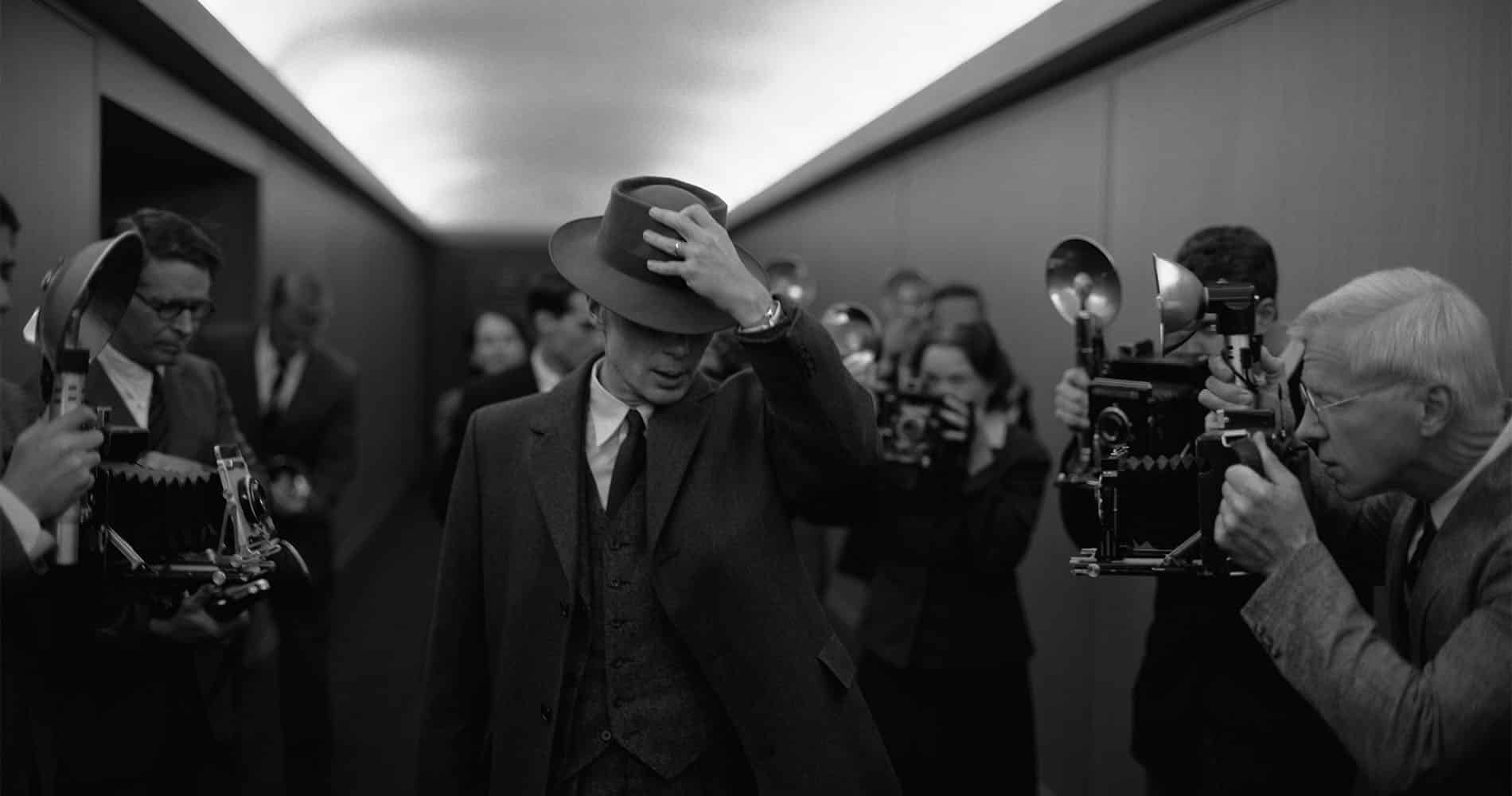<em>The film’s events are magnetically clustered around Los Alamos, finds Julia Hamilton.</em>
If you thought that Christopher Nolan’s last film, Dunkirk, was over-rated unhistorical nonsense – I confess I did – then Oppenheimer, his latest, starring Cillian Murphy in the performance of his life as the Faustian over-reacher that was Oppenheimer (or “Oppie”, as his friends called him) will make you think again about his ability to handle huge historical projects.
The fact that the film is based on Kai Bird and Martin J Sherwin’s 2005 magisterial yet compulsively readable Pulitzer Prize-winning biography, American Prometheus: The Triumph and Tragedy of J Robert Oppenheimer, which Nolan apparently read (or, more likely, devoured) in 2021, no doubt helped. Everything he needed was there – the drama of the 1920s speeded-up scientific advances in quantum physics, the mind-boggling emotional and intellectual complexity of his main protagonist, the coming war which dramatically highlighted the urgency of the task at hand. Then the actual test itself, rather ironically named Trinity by a man whose family had successfully ditched their own Jewish roots in an attempt to assimilate into upper-class American life.
Nolan carves up the events of Oppenheimer’s life in such a way that the end result bears a close resemblance to a filmic version of a Cubist painting. Right from the beginning, the timeline cuts rapidly here and there. Pre-war events include young Oppie at the Cavendish Lab at Cambridge, hapless, emotionally unstable, trying to poison his hated boss Patrick Blackett by leaving a positively pre-lapsarian bright green apple on his desk which he has injected with cyanide. Then to Göttingen where he meets and falls under the influence of the father of quantum theory, Niels Bohr (Kenneth Branagh). “The science is much better than at Cambridge ... probably the best to be found,” wrote Oppie to his brother. Not long after, we’re at a post-war Princeton landmark meeting with his nemesis, the ghastly, treacherous Lewis Strauss – one of the shocks of the film is how the unctuous Strauss has been betraying Oppenheimer all along for years – where Oppie takes a job at the Institute for Advanced Study. Einstein (Tom Conti), already a friend of Oppie’s, is sheltering at Princeton and we watch as Oppie wanders off to talk to Einstein who is standing at the edge of the lake while Strauss (Robert Downey Jr) looks on, envying Oppenheimer’s superior access to his pet genius. There are so many Nobel Prize-winning scientists in this film that you might end up getting a headache trying to remember them all.
In between there’s a pivotal hearing of the 1954 US Atomic Energy Commission, a kangaroo court held to determine Oppie’s alleged communist leanings, never proven. Thrown in, too, is another hearing from 1949 where Oppenheimer begs the US government not to develop a hydrogen bomb, rounded off by a memorable scene where an unsympathetic President Harry Truman calls Oppenheimer a “cry-baby scientist”, when Oppie pleads with him not to build a super bomb, advice Truman robustly ignores.
All the events of the film, however, are magnetically clustered around the central event – the project beneath the snow-capped peaks at Los Alamos in New Mexico, a place Oppie knew of old and had always loved.
Under the direction of General Leslie Groves (brilliantly played by Matt Damon) we watch Oppie’s lab being built, as bevies of mad, argumentative scientists roll in with their families; the whole scientific aspect of the construction of the bomb looks alarmingly Heath-Robinsonian, with Oppie peering at it the night before the test rather as a naturalist might look at a totally new discovery in a cage, awed and amazed.
What the film brings out brilliantly is Oppie’s denial: he’s focused on the test, will it, won’t it, ignoring his very valid qualms about what success would mean. And although we know the outcome, the brilliance of the film allows us to feel the almost unbearable tension as history unfolds during the long, loaded seconds of the countdown. The soundtrack by Ludwig Goransson has you on the edge of your seat here.
As the spectral flash from the exp-losion and the sounds roll outwards we watch the unfolding beauty with horror, a sense that this really is the fruit of the tree of knowledge of good and evil, the apple of the early scenes in Cambridge, the light that no mortal should ever witness.
The last part of the film sags slightly after the electrifying build-up to the Trinity test but the story rolls on inexorably, like the consequences of the invention itself. There are interminable vignettes of Oppenheimer’s post-war McCarthyite show-trial, conducted in a glum government Portakabin, cut with scenes of family life. His wife Kitty (Emily Blunt) is horrified by her husband’s proclivity for martyrdom: “Did you think that if you let them tar and feather you, they would forgive you?” she asks, pertinently, before pouring herself another drink.
As the film progresses Oppie’s physical presence shrinks: his thick dark hair vanishes to be replaced with what almost resembles a tonsure, a visible mark of his inner suffering. In the end he looks like a survivor of one of the death camps his family managed to avoid.



